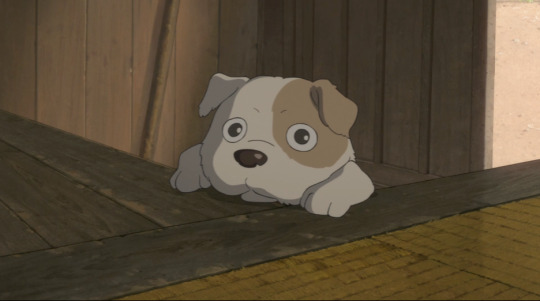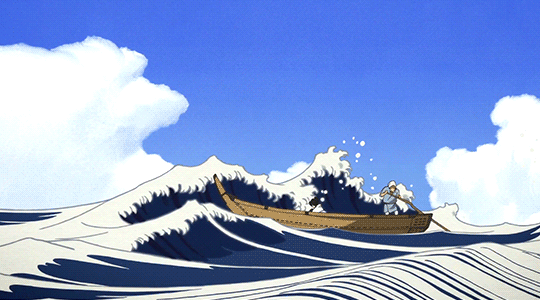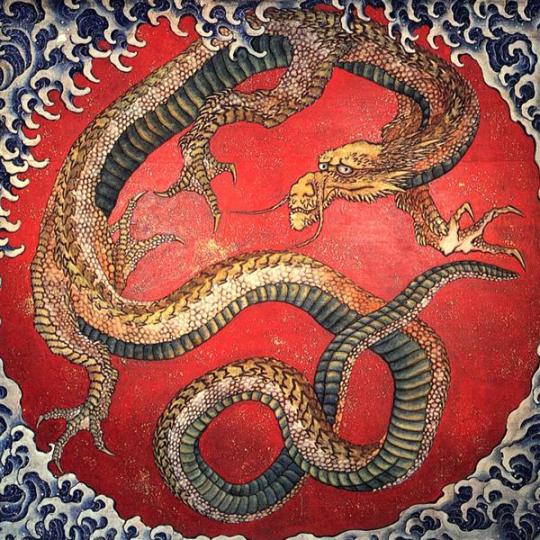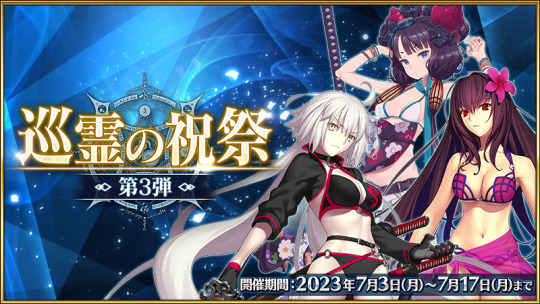#miss hokusai
Explore tagged Tumblr posts
Text

They went to the con, but got lost on the way. And the signal is not so good…
Drew my ocs cosplaying characters they could kin⬇️
Eirian – movie!Howl, “Howl’s Moving Castle”. He isn’t much like book!Howl, who isekaed from Wales and who buy a skull for the last money in the name of aesthetics (although his name is Welsh, and he definitely hides some skeletons in the closet). But the mysteriously elusive Howl of Miyazaki's version is quite suitable. And like Howl’s, Eirian's life does not belong to him.
Rin — O-Ei, “Miss Hokusai”. A hereditary artist in search of a personal style. She wants to be the heir to the traditions of her parents, but at the same time she is trying to develop her own ideas. Existing on the border between the mundane and the fantastic is a common thing for her, especially when all kinds of mysterious things have long been a part of everyday life.
Dante – Wriothesley, Genshin Impact. Calm, collected, order-loving person. Living in a big family (Dante has three older sisters and two younger ones) taught him to be able to establish relations with anyone - and appreciate the silence.
Shelly - Jinx, “Arcane”, The younger sister who will never be able to share the same path with her older sister. She’s always trying to prove herself worthy of the expectations placed on her. Complicated relations with parents are also there…
#original character#original character art#oc art#howl pendragon#miss hokusai#wriothesley#jinx arcane#procreate#artists on tumblr#digital art#lynn lyrae art
29 notes
·
View notes
Text
Revenge of the Underrated
Pretty Guardian Sailor Moon Eternal The Movie Part 1 vs Miss Hokusai


Vote in the other polls!
#Revenge of the Underrated#best animated movie#round 4#Pretty Guardian Sailor Moon Eternal The Movie Part 1#Miss Hokusai
7 notes
·
View notes
Note
Hi....If you don't mind, can I ask, what are your top 10 (or top 7) favorite media (can be books/ manga/ anime/movies/tv series)? Why do you love them? Sorry if you've answered this question before......Thanks....
no worries, im happy to answer. and, if i happened to already answer sth, I'll link u to it.
so, fav medias... hmm...
book(s): the radiant emperor duology
ik it just came out and was only recently finished (like, finished Sept 2023 lol) so this is probably bias speaking but i am extremely taken by She Who Became the Sun and He Who Drowned the World, these books are fckn phenomenal. the gender-fuckery, the exploration of gender and sexual performances, the hidden message of embracing ourselves in all our ugliness and 'deficiency' and making a place for ourselves and ppl like us when others shun us. these books are just!!!
documentaries: immortal egypt (Joanne Fletcher)
i really really love documentaries and this mini series hold a special place in my heart bcs i love history and I've always been fascinated by egypt and Joanne's enthusiasm is just so joyous and infectious, i love it. i put this on repeat in the background when i was doing my graduation project in 2018 lol yea, just me listening to egyptian docu while working my ass off on AutoCAD lol
anime: sarusuberi/miss hokusai
idk how to explain but there's just a quality to this animated film that got me going... like, i adore howl's moving castle but miss hokusai is sth else. it's so peaceful but also deeply profound and visceral somehow.
tv series: aircrash investigation
i love planes, i love the Concorde in particular, but it has nth to do with how cool planes are but with how child-me saw riding planes as a thing that only ppl with money could do. it evolved from there.
i also love mysteries and aircrash investigation is both lol
i remember watching it on tv when i was an adolescent and i was fascinated with the mystery and problem-solving of it all ever since.
movie: the prince of egypt
it's a story about love; love that forgives, love that creates hate, love that divides.
drama: nirvana in fire (c-drama), beyond evil (k-drama), kluen cheewit (thai soap opera)
bl-specific: old fashion cupcake (anime AND manga)
the plot of these dramas is impeccable (tho kluen cheewit is extremely dramatic so pls beware lol), the character developments are fckn amazing, and what's even more important is the platonic relationships between the characters!!!
also, special shout-out to thai bl soap opera khun chai/to sir (with love) as well! the drama is off the charts, the characters are flawed & human & infinitely relatable & Tian & Yang's brotherhood is EVERYTHING
just one of the best bls out there and I've consumed A LOT of BLs/yaois... ALL SORT of em lol
the story is really grounded in reality, the plot is so mundane and relatable, the characters are mature but extremely flawed, and the art (in the case of manga) and the acting (in the case of the series) are amazing.
song: queen bee by vannda (contemporary music from my country)
i DO NOT agree with the lyrics AT ALL but i adore the melody. i absolutely love, love, LOVE how he blends traditional khmer music with the modern one. it's not a necessarily modern take but it's sth different. this artist is very good at blending the old w/ the new and i applaud him for that. his music is so pleasing the ear but the fkcn lyrics... urGH
well, a song of his with message that i completely agree with is time to rise with master Kong Nay... though the mixture is too in my face lol which is why i prefer queen bee
#the radiant emperor#she who became the sun#he who drowned the world#shelley parker chan#miss hokusai#howls moving castle#howl's moving castle#ghibli#studio ghibli#the prince of egypt#nirvana in fire#beyond evil#kleun cheewit#old fashion cupcake#noona96n
48 notes
·
View notes
Text

Miss Hokusai: The world is beautiful because of "light" and "shadow."
It is believed that many people have seen the famous image of a giant wave engulfing small boats at sea (The Great Wave Of Kanagawa), drawn with traditional Japanese brushstroke techniques. This is the masterpiece of Katsushika Hokusai, a renowned Edo-period artist known across Japan and the world. His works have inspired many European artists, contributing to the development of a Western art movement influenced by Eastern art, known as Japonism.
However, few people know the name and life of the person behind his success — Katsushika Oei, Hokusai's daughter, who possessed artistic talent in brush painting on par with her father. This is her story, brought to life in the 2016 animated film adapted from the Japanese manga by Hinako Sugiura, titled Miss Hokusai. In Japanese, it is known as Sarusuberi (百日紅), which translates to Crape Myrtle, symbolizing the aesthetics and beauty found in woodblock prints (Ukiyo-e) and Japanese brush art, often filled with images of legends, folklore, landscapes, spirits, or imaginary worlds that float beyond reality.
The world is beautiful with "light" and "shadow": A nameless female artist who lived in her father's shadow and became the light for her blind sister.
In the Edo period, the beautiful and unique works of Hokusai shone brightly throughout Japan, like a radiant light. But who knew that behind his glorious fame, there was a young girl who followed in her father’s footsteps, whose skills were second to none.
According to accounts from people who knew the father-daughter artists, it is said that in the early days, Oei rarely signed her name on her work. Sometimes, she used a pseudonym. Many times, she painted on behalf of her father as a nameless artist and sold the work with Hokusai’s name on it. This was because, during the Edo period, female artists' works were often not accepted, as women were expected not to be painters but to take on roles like housewives, merchants, courtesans, or other professions.
Moreover, it was believed that women lacked the skills to observe the world around them and the sexual experience necessary to convey in good art. In addition, most buyers and art consumers were male, so art was produced primarily to serve and cater to male desires. Examples include paintings of courtesans (Oiran), Geisha artists, or erotic depictions of relationships between women and men, women and women, or men and men, meant to serve as illustrated books for sexual arousal.
Thus, society at that time believed that a woman's perspective in creating art for men would either not sell or fail to fully meet men's emotional and sexual desires. These were the challenges that female artists like Oei in the Edo period had to face. Oei encountered many obstacles and had to hone her skills to fight against criticism and judgment in order to gain recognition within a patriarchal world.
However, since Oei understood this societal rule well, she accepted her role as merely a "shadow" under her father's bright "light." She found happiness in observing the world around her to further develop her skills. Her life was considered quite unusual for a woman in the Edo period. Unlike most women of her time, she had no desire to follow the traditional path of being presented for marriage, settling down with a man, and starting a family. Instead, she lived to serve her and her father's passion for art, as well as to study the natural world around her. This made her a courageous, independent, and self-assured woman, different from other women of her era.
On the other hand, Oei became a "light" for the darkened world of her unfortunate blind sister, "Onao." In the story, we see that whenever Oei takes Onao for a walk, she makes an effort to describe to Onao the shapes, colors, objects, people, or places that Onao cannot see with her own eyes.
Oei also expresses her true femininity without having to hide it. She speaks and treats her sister with gentleness and a bright smile, and the two are always filled with laughter from playing together.
This contrasts with her serious and stern expression, her rough and curt tone, or sometimes her silence, speaking only when necessary to project an image of credibility as the one negotiating on behalf of Hokusai with clients. She also had to behave in a commanding manner as the daughter of an important artist.
We can also interpret her behavior toward her father and all of Hokusai's male apprentices as Oei crossing the gender boundary. Her entering into the male-dominated world required her to act equally strong and bold enough for them to accept her as a capable colleague and artist.
It can be said that Oei needed to play different roles depending on the situation, location, and people she encountered. This also tells us that Japanese society, from that era to the present, has expected individuals to behave according to the roles society dictates.
Although Oei could only be a "shadow" in the male-dominated sphere, she was a crucial supporter who helped her father's fame spread far and wide, becoming an indispensable assistant to Hokusai. Moreover, she remained a "beautiful light" for her sister, fulfilling her role in the female sphere according to her gender.
The other side of the red-light district, as seen through the eyes and brushstrokes of Oei
According to accounts from people who knew Oei, she was not only very observant of her surroundings but also deeply fascinated by "light." Every time there was a fire, Oei would be the first to jump out of bed and run excitedly to see it. Her reason for rushing to witness the flames was different from others—she was captivated by the vibrant, intense colors of the fire, which no paint or pigments of that era could replicate.
Oei tried her best to memorize the colors and movements of the flames so she could capture them in her artwork. Her love for vivid tones, combined with the influence of Western art that was beginning to spread in Japan, led Oei to experiment with a new style. She began creating works that used bright colors to represent "light" and darker shades to symbolize "shadow," which was a departure from traditional Japanese paintings that often emphasized softer tones, simplicity, and linework. These innovations helped to distinguish Oei's paintings.
Moreover, her artwork illuminated a different side of the pleasure quarters—the daily lives of courtesans in the red-light district. Oei’s depictions differed from those of her male contemporaries. While male artists of the time often portrayed courtesans as seductive and erotically appealing, Oei’s work reflected their humanity and ordinary aspects. Though by night these women were viewed as objects of sexual desire, praised for their beauty, and skilled in music, art, dance, and theater to entertain male patrons, they were still considered unworthy of becoming wives or taking a place in society, remaining hidden in the world of nightfall.
But who would know that behind the elaborate makeup, the beautifully adorned courtesans living in the red-light district were simply ordinary women, full of beauty, sweetness, emotions, love, hope, dreams, and desires just like anyone else? Oei captured this reality in her paintings with great depth, and her works became well-known, including pieces such as A Beauty Writing Poetry By the Cherry Blossoms at Night, Night Scene in the Yoshiwara, and Three Women Playing Musical Instruments.
Miss Hokusai is an animated film that not only highlights the talents and importance of women who were no less capable than men but also reflects the challenges women faced under the patriarchal system. These include being objectified, having their work judged by male standards, and having to modify their behavior and identity to fit norms established by men.
At the same time, Miss Hokusai presents a clear perspective on women that many might not expect, helping to convey the importance of women's rights in a society striving for gender equality. The first step toward change should begin with understanding and listening to different perspectives.
#miss hokusai#anime#manga#animation#japanese#oiran#japonism#art#ukiyoe#japan#culture#history#edo period#women#female artists#katsushika hokusai#natural art#red light district#folklore#japanese people
15 notes
·
View notes
Text
just recently finished watching Miss Hokusai and I have no thoughts except for this guy


11 notes
·
View notes
Text
Ask Us Anime!

We're on another episode of Unlimited Rail Works, and as finally some reprieve into a more mellow and somber piece of work, we have watched Miss Hokusai!
Let us know your thoughts if you have followed along, and continue to send us any questions or comments about any other opinions or curiosities on anime you may have been indulging in.
5 notes
·
View notes
Text

0 notes
Text
Our latest post is live! See what we thought of Miss Hokusai and let us know your own thoughts.
#anime#anime blog#blog#anime and manga#anime series#blogpost#miss hokusai#katsushika hokusai#japanese art#anime movie#anime movies#movie review
0 notes
Text
#Miss Hokusai#Sarusuberi#Halloween#Halloween Vibes#Skeletons#Anime Skulls#Oni#I wanna hang out with them#Skeleton Maid?#Anime#Anime GIF#My GIFs
1 note
·
View note
Text
Miss Hokusai (2015)
[Watched on March 31st – April 1st]
There’s a reason why this film was on my to-watch list since *checks notes* at least 2016, and why I haven’t gotten around to it until now. I guess the vibes I was getting from it were correct.
In theory, the story of a real-life female ukiyo-e artist (Hokusai’s daughter, no less) is something exactly in my wheelhouse. Representation of women and gender nonconformity in the past, especially in an era that interests me? Check. Life of commercial artists in Edo? Check. Surprise yokai, even? Check.
In practice, the execution is uninspired and mediocre.
Throughout at least the first half hour, I was appalled by the cliché facial expressions, body language, and other basic building blocks. Over the course of the film, they stopped bothering me; I don’t know if it got better or if it was me who acclimatized. It seems like this happens every time I watch anime again after a long break, and I don’t know if I’m allergic to the general style of the medium or I’m just watching the really unfortunate ones.
It can’t be all my skewed perception, though. Like, that fucking wave scene?! How cheesy can you possibly be?
To the film’s credit, it’s creative enough to actually show the artists’ work in the authentic style instead of redrawing them in the same style as the main story. Unfortunately, the shifts between the two only showcased how deficient the main style is in comparison.
The screenplay eschews the standard structure in favor of loosely connected vignettes. According to the Wikipedia page, that was also true of the manga it’s based on. The story certainly sounds better suited to a long-form episodic comic book that came out over four years than it is to a 90 minute feature film. I guess this loose structure might also be said to be reminiscent of some Japanese classics, and I feel like a stereotypical western viewer accusing a Japanese work of a lack of conflict… But it still feels unsatisfying.
I have to give it credit: there is also more connection between the vignettes than it seems initially. The film has several storylines:
O-Ei is talented and skilled, but still far from her father’s level of mastery
O-Ei loves her younger sister and wants their father to stop neglecting her
Spirits are real and Hokusai knows how to deal with them
O-Ei is bad at drawing erotica because she is a virgin
O-Ei has a crush on her fellow painter, and another painter has a crush on her
1 intersects with 3 and 4. 4 intersects with 5. 2 intersects with 3. These were the highlights of the film for me, and felt like they foreshadowed something bigger. It feels like all five of them should have somehow come together at the end for a climactic scene that revealed them as parts of a harmonious whole, but that didn’t happen.
The supernatural storyline is the most baffling. The audience and the protagonist learn that various kinds of spirits actually exist, the genre seems to shift for a scene or two… And then what? I guess the scene of O-Nao’s death is supposed to be a culmination of that storyline, but it doesn’t feel like a natural one.
When O-Ei watched the burning building with fascination, I thought it was leading to something like Akutagawa’s Hell Screen, in which an artist asks for a deadly fire to paint it and gets more than he bargained for. The film even followed this with a whole scene centered on an actual hell screen! How could this be a coincidence? As it stands, the fire scene is very short and not connected to any other scene before or after her — the only one in the entire film.
Zenjiro’s character seems completely superfluous. I was shocked when the ending narration revealed he was also a famous artist under another name. This leads me to the question: how is the intended audience supposed to view these characters? Do they know the names of all these minor painters and enjoy the feeling of recognition? Do they learn something new to them about the setting, or on the contrary, find it pleasingly familiar?
In general, I just don’t understand what the purpose of the film is. Specifically, I don’t understand where it’s situated on the scale between “using historical characters and settings as a vehicle to tell a story that interests you” and “semi-educational biopic strongly rooted in reality”. Surely the most educational value comes from the film’s mere existence. “Did you know Hokusai had a daughter who was also a talented artist? There’s even a movie about her!” That is certainly useful information, but actually watching the movie doesn’t add much more. Is anything in it based in reality at all, beyond the artists’ names and their specialties? What’s going on here beyond a combination of clichés? Pretty much nothing, I’m afraid. If the film isn’t bringing interesting real-life events to screen, and isn’t playing out interesting made-up events with dolls that have real names pasted onto them, then what is it even doing?
I feel bad about being so critical. Somebody at least made an effort. Decided to make a whole movie about a historical woman few people knew about. Made her a grumpy, rude introvert, devoted most of the storyline to her relationship with her craft and her family. Made her awkward and distant in romantic and sexual matters in a realistic way. She isn’t sexualized at all, while the film deals with the subject of sexuality in an open and mature way. The idea of different storylines woven through separate scenes had promise too. There’s a warm portrayal of a disabled child and the way her loved ones accommodate her blindness. These are all things deserving of praise.
And still, it’s so… empty. Lacking in negative qualities, it also lacks in positive ones. Is this the best we’re going to get?
Highlights:
The pretty background of the snow and the morning sky.
As I said above, the visual style shifts. (I’m assuming they’re the reason for this film being animated instead of live action.) I’ll include the shot of Hokusai’s spirit hands weaving around the bridge here, that looked just like a woodblock print.
The scene in which a prostitute latches onto our shy and reluctant heroine as a welcome break from servicing unpleasant monks, then promptly falls asleep on top of her. Surprising level of psychological nuance. The spirit of Edo lit was alive in this one.
And finally, a question:
Did Hokusai fucking kill O-Nao with that “protective” drawing? That couldn’t have been a coincidence, right? What was the film trying to say here?
0 notes
Text










MISS HOKUSAI | 百日紅, 2015
Keiichi Hara
1 note
·
View note
Photo


#looks like they're getting strengthening's and it seems like their events are coming back if you missed them#I do think summer 1 and summer 3 are some of the most fun events in the game tbh#Scathach#Jalter#Katsushika Oi#Katsushika Hokusai
124 notes
·
View notes
Text


my frieeendsssssss :3333
#said in le frog voice. hehe. i loove u turner i loove u el greco magdalene.....!!!!!!#didn't spent too long there bc waves hands. but. saw all my bestfriends!! ill come back for their hokusai exhibition in september n go see#all my other faves (the se asian wing!!) I missed <33#txt
7 notes
·
View notes
Text

ill post in full later but i liked this little hokusai a lot~♡
#fate grand order#fgo#fgoposting#katsushika hokusai#hokusai#hokusai fgo#artists on tumblr#birbb art#fateposting#i havent drawn digitally in months and im so back#i missed csp so much 🥺
7 notes
·
View notes
Text
I mourn Shion not being in the Summer or Spring group 💔💔 get this man a parasol, electric handheld fan, a big stupid hat, and sunscreen…
#yes his skin disease & light sensitivity. but I’m having the worst hokushion spring group brainrot#they are sitting under a tree or sitting in the shade of the school building after school’s ended#shion’s having a smoke and offers Hokusai one and#fizzling out. sniffles. hokushion I miss you
1 note
·
View note

